You can contact LEARNZ, part of CORE Education, at:
Postal Address:
PO Box 13 678,
Christchurch 8141,
New Zealand
Photos appear here each day from the Diaries of the Cool Science in Actioni field trip in 2018.
Other pages with photos:
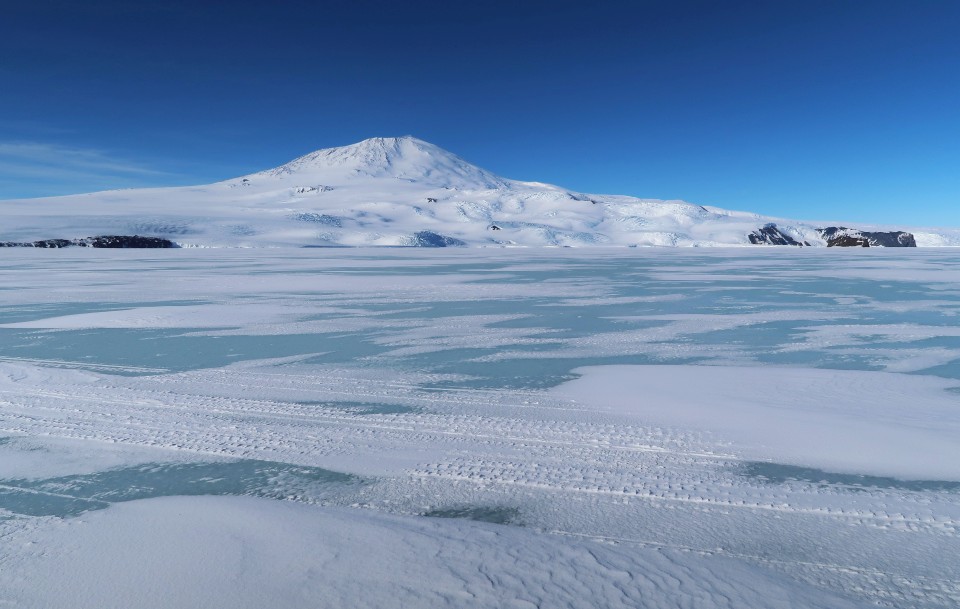
You enjoyed great views across the sea ice to Mount Erebus as you drove to Cape Evans. You can see patches of sea ice where the wind has blown the snow away. Image: LEARNZ.
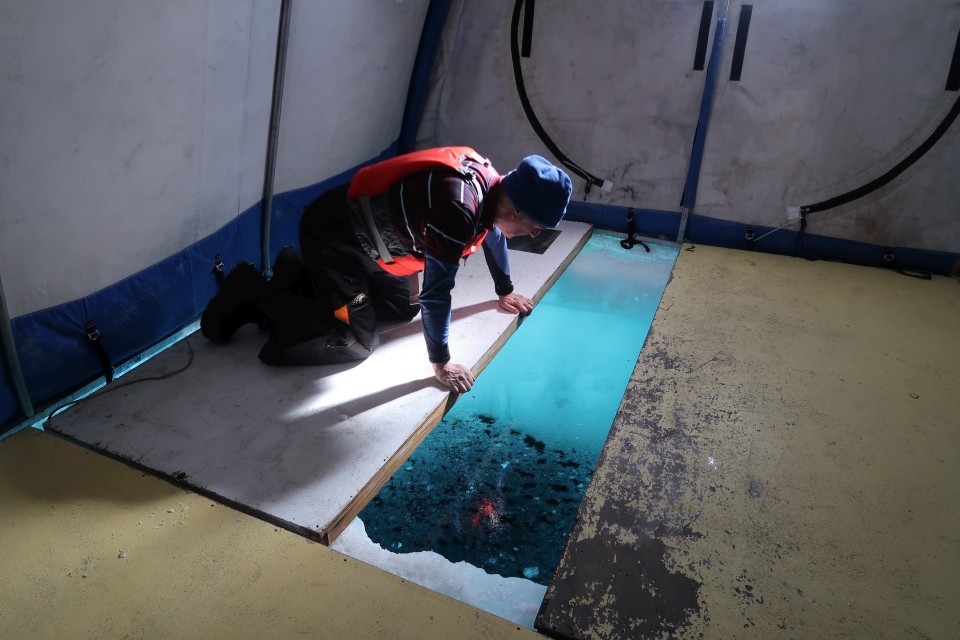
Ken Ryan checks the new hole which has been drilled in the sea ice. Image: LEARNZ.
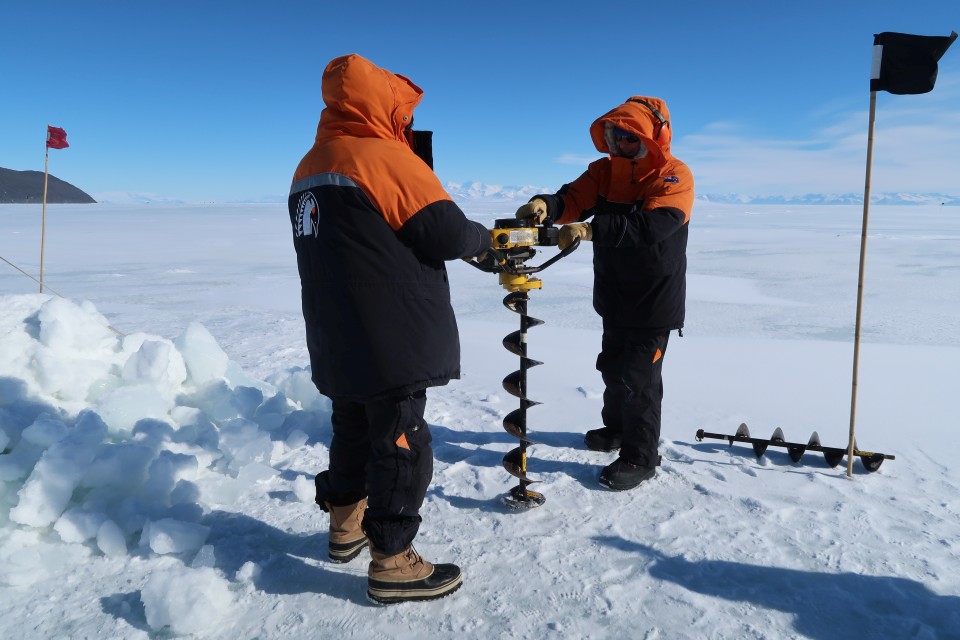
The scientists drill a hole with a jiffy drill so they can then take an ice core to sample the sea ice algae living on the underside of the sea ice. Image: LEARNZ.
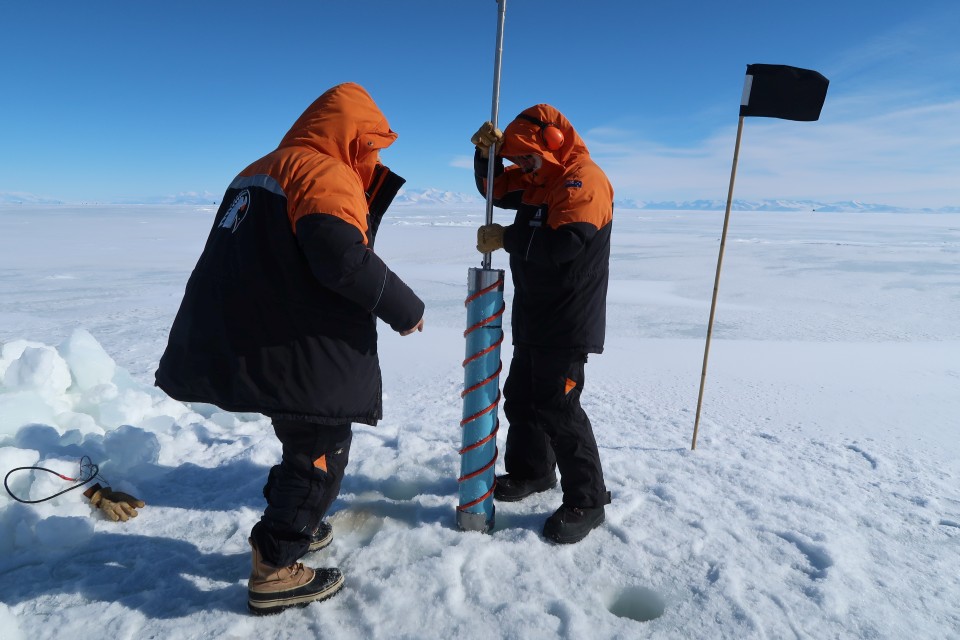
This circular tube will cut a core of ice from the bottom of the sea ice so the sea ice algae can be analysed. How thick is the sea ice here? Image: LEARNZ.
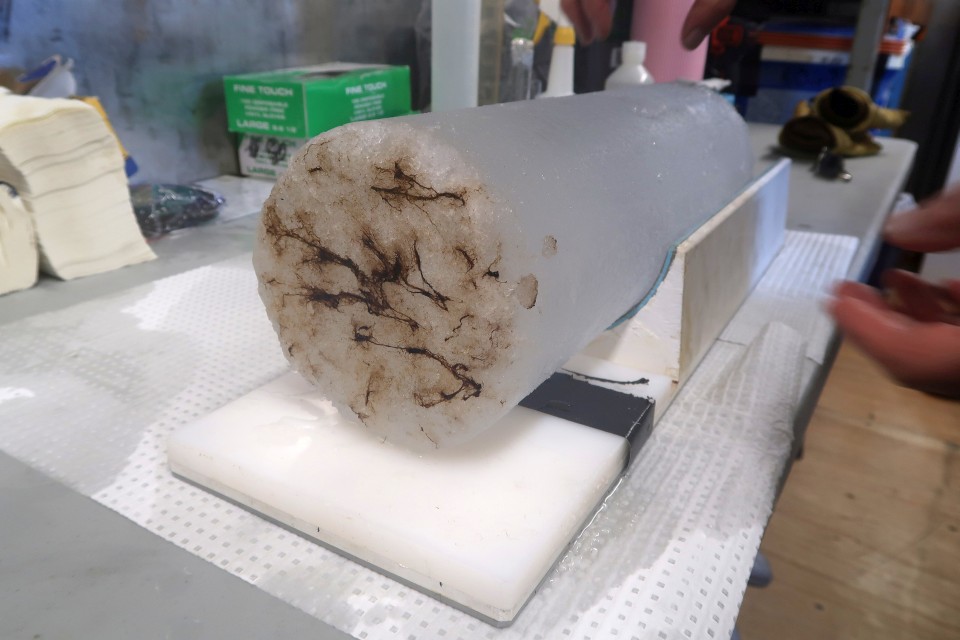
Back in the lab the scientists collect sea ice algae from the ice core so they can look at it under a microscope. Image: LEARNZ.
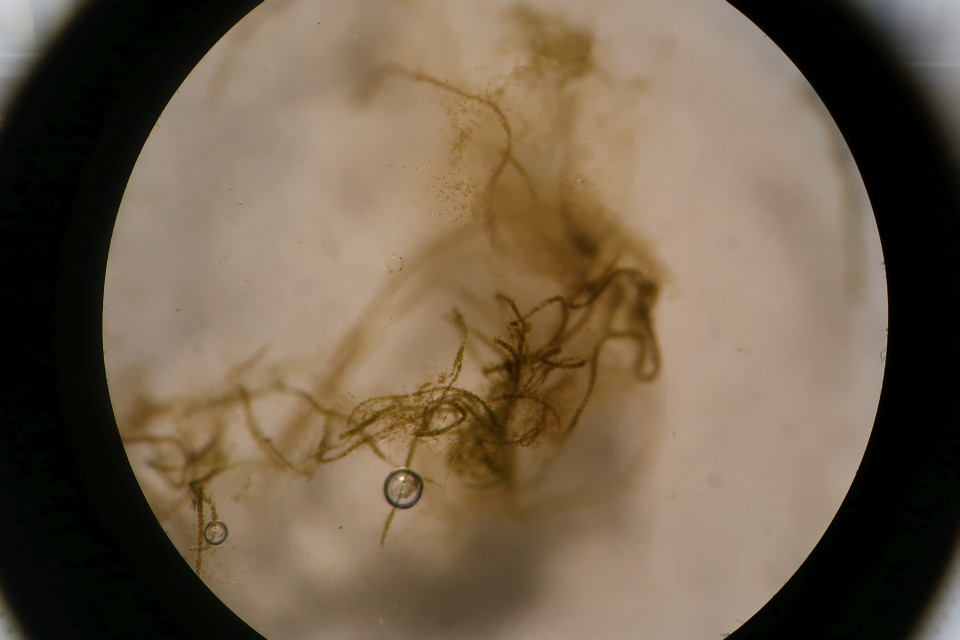
Looking at sea ice algae under a microscope magnified four times. Strands of sea ice algae are made up of microbes called diatoms. These microbes are also known as phytoplankton or plant plankton. What community does sea ice algae belong to? Image: LEARNZ.
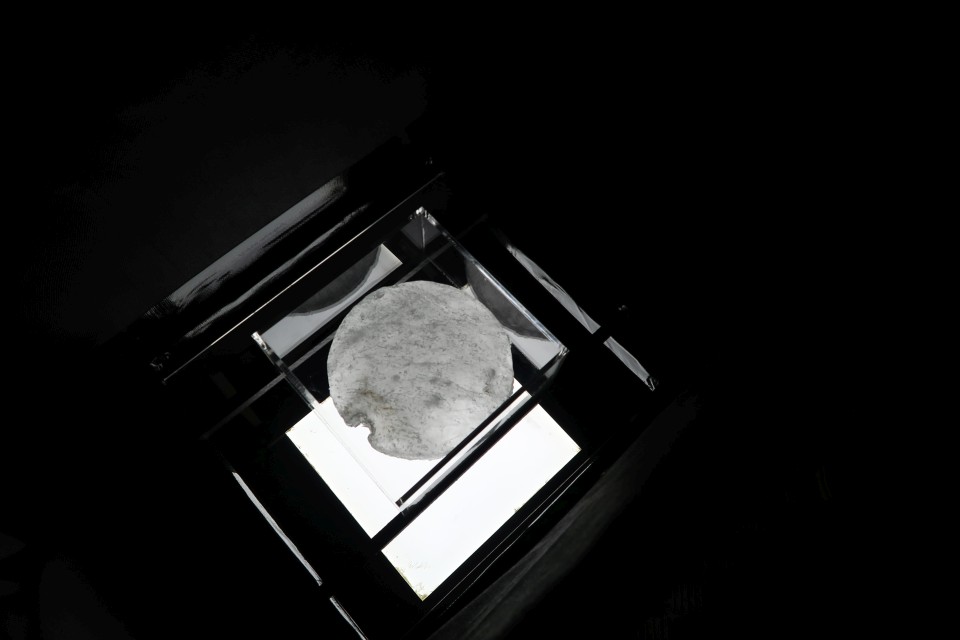
A slice from a sea ice core is being scanned for sea ice algae. Why do you think this needs to be done in the dark? Image: LEARNZ.
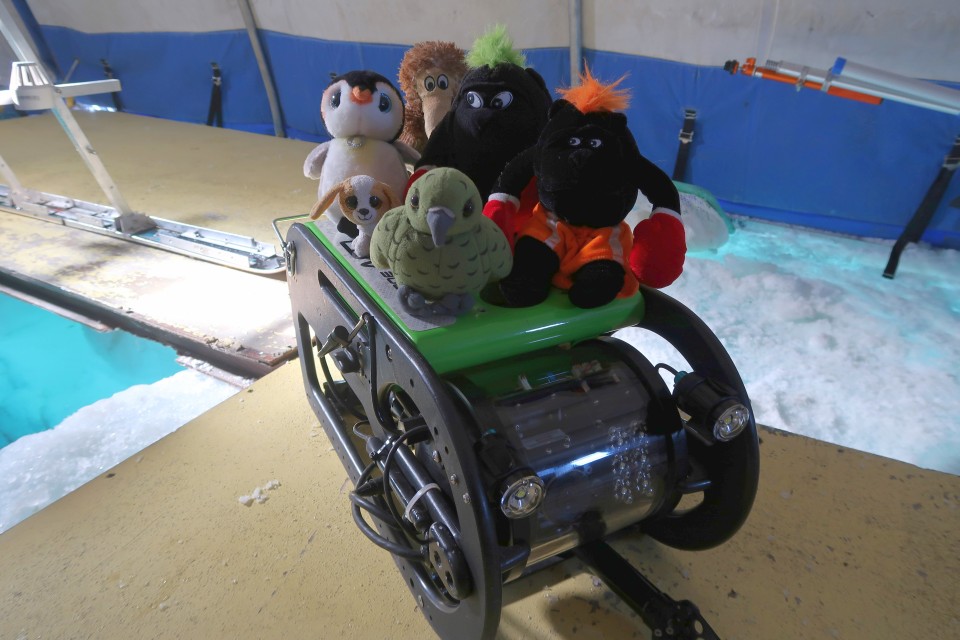
The ambassadors take a ride on the ROV (remotely operated vehicle) which will be used under the sea ice. What will the ROV be used for under the sea ice? Image: LEARNZ.

Vanessa shows Shelley the frame which will be used as a sled that will be pulled along the underside of the sea ice. The sled will carry sensors and cameras to monitor sea ice algae. Image: LEARNZ.
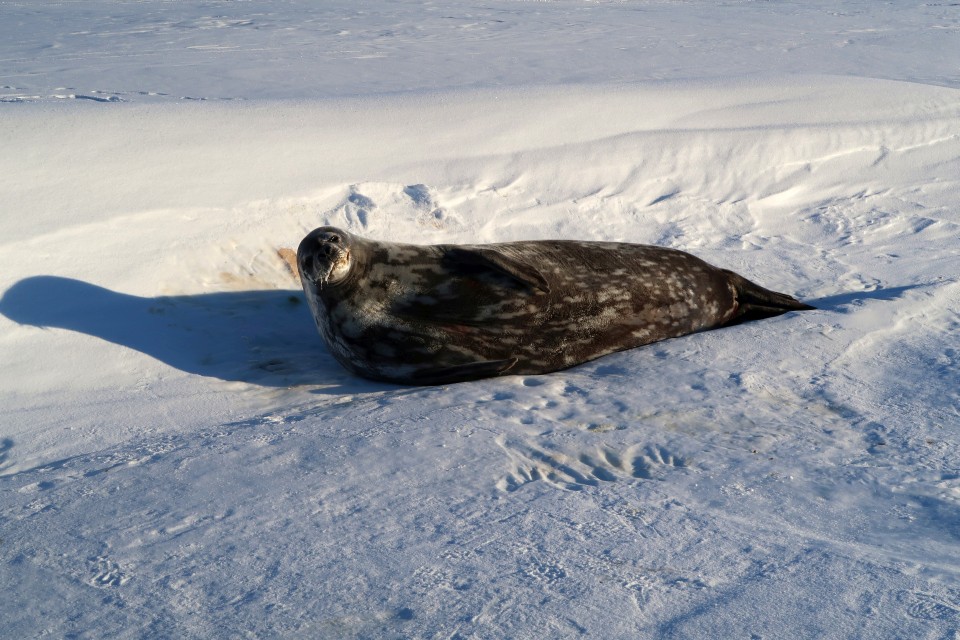
A Weddell seal is spotted outside Scott Base. Image: LEARNZ.
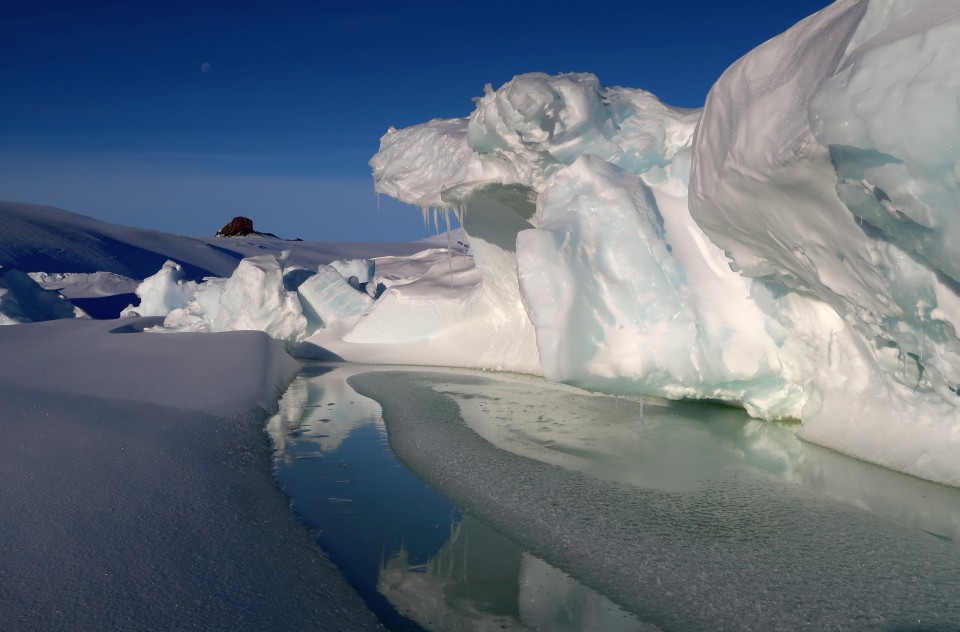
You ended the field trip with a wander under the midnight sun through the spectacular pressure ridges outside Scott Base. These ridges are formed where the sea ice meets the Ross Ice Shelf. Image: LEARNZ.

The scientists begin drilling a new hole in the sea ice. Why do you think they needed to drill a new hole? Image: LEARNZ.
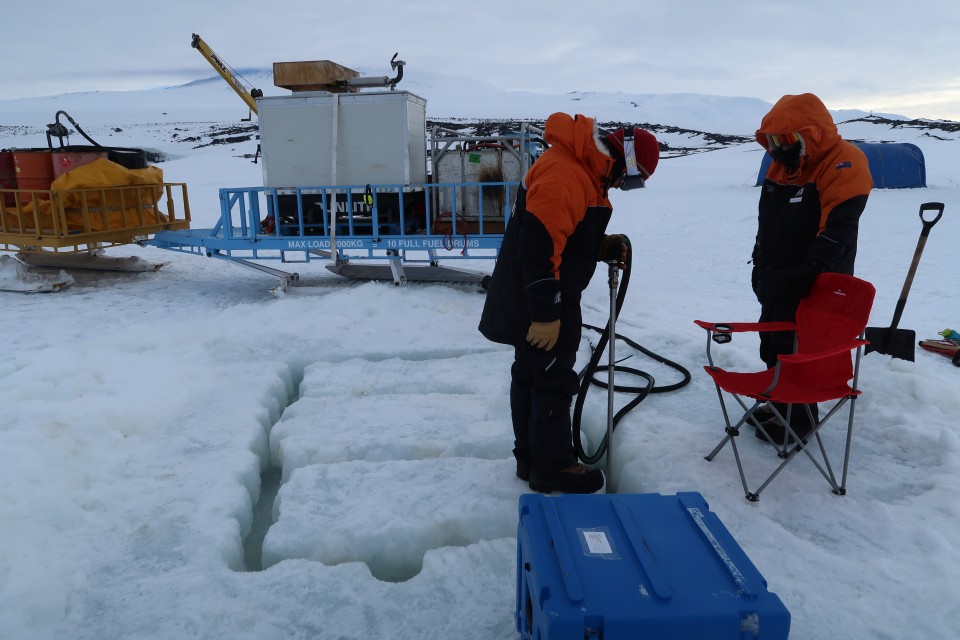
After drilling lots of small holes in the ice the scientists use a hot water drill to cut through large blocks of ice. Image: LEARNZ.
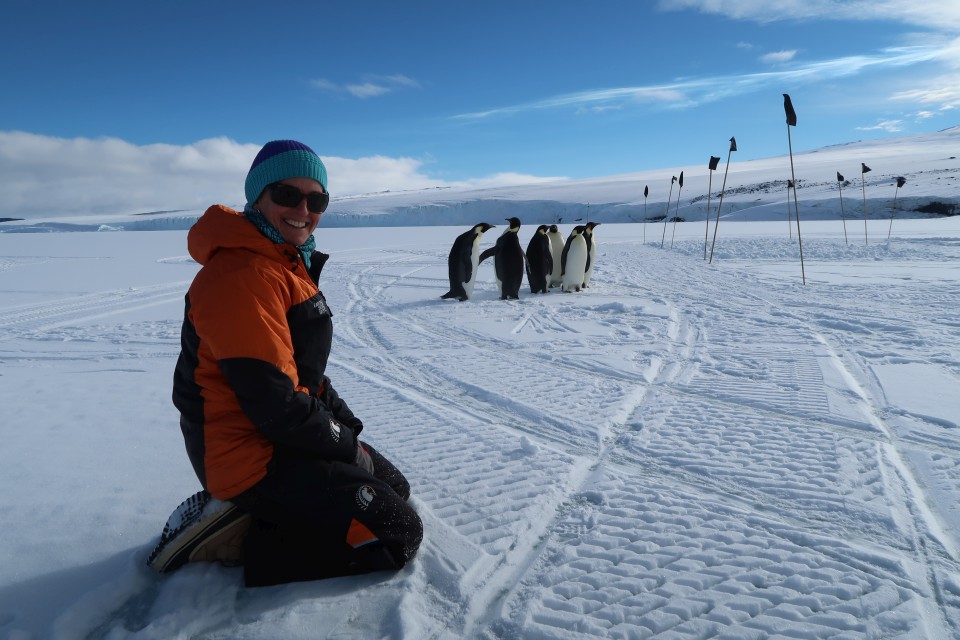
Shelley enjoys a visit from six curious emperor penguins. Image: LEARNZ.
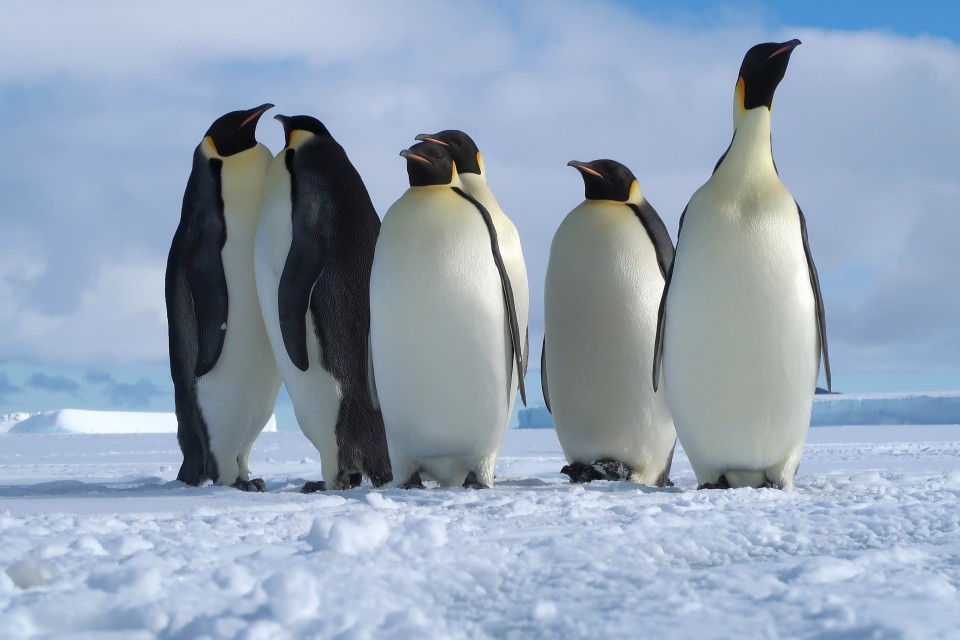
It was a special experience getting so close to emperor penguins. They weren't shy and seemed to enjoy exploring the field camp. Image: LEARNZ.
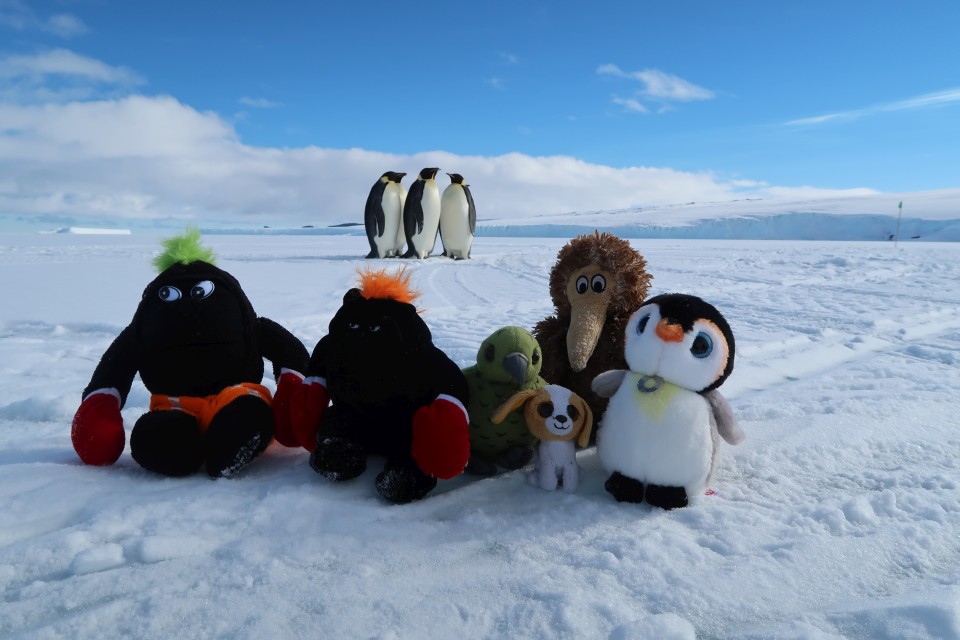
The ambassadors pose for photos with emperor penguins at Cape Evans. Emperor penguins are the tallest and heaviest penguins in the world and the only birds to breed during the Antarctic winter. Image: LEARNZ.
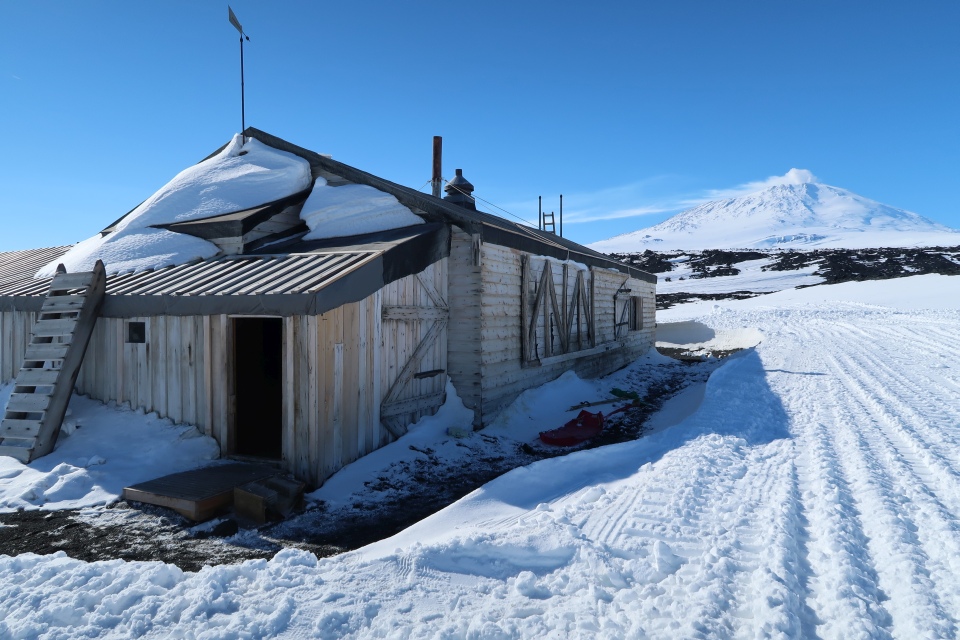
This is Scott's Terra Nova Hut at Cape Evans. It has been conserved by the Antarctic Heritage Trust. Today snow was cleared from around the hut using a snow grooming machine. Image: LEARNZ.
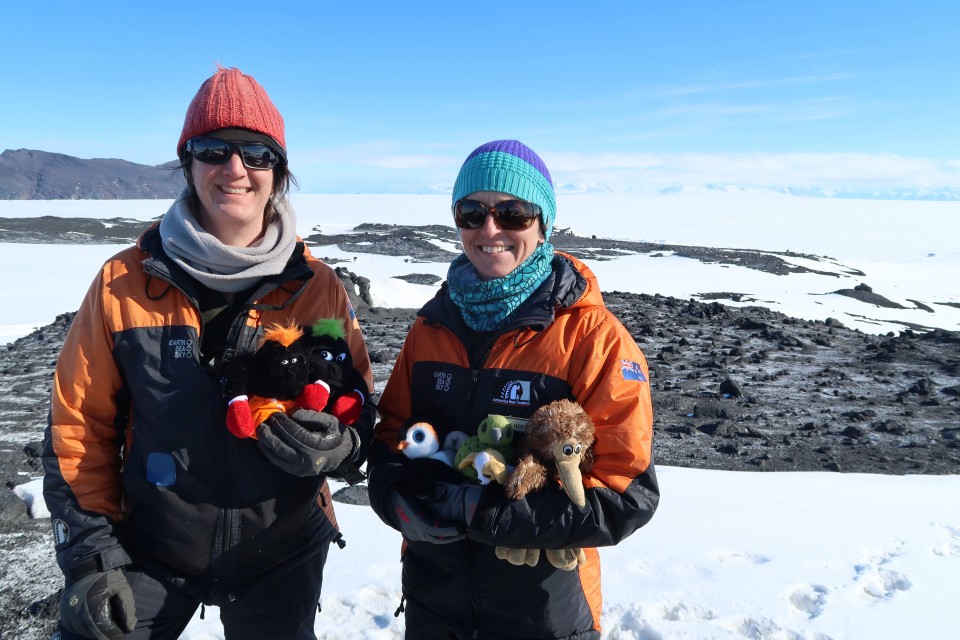
Lizzie Meek from the Antarctic Heritage Trust talks to Shelley about the history of Cape Evans. Why is Cape Evans an important part of Antarctic history? Image: LEARNZ.
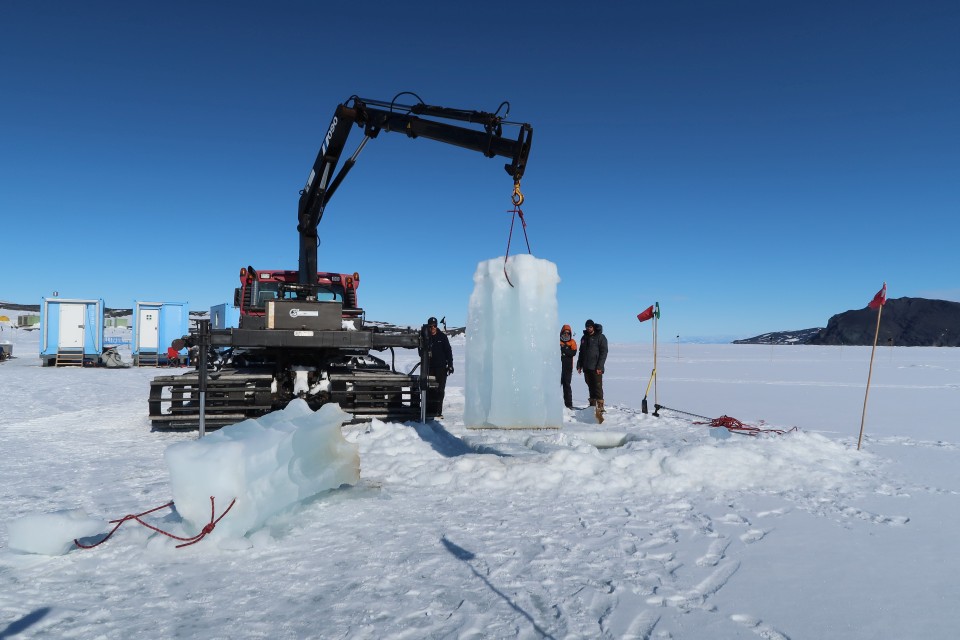
A block of ice that the scientists cut through with a hot water drill is pulled from the sea ice. How thick do you think this sea ice is? Image: LEARNZ.
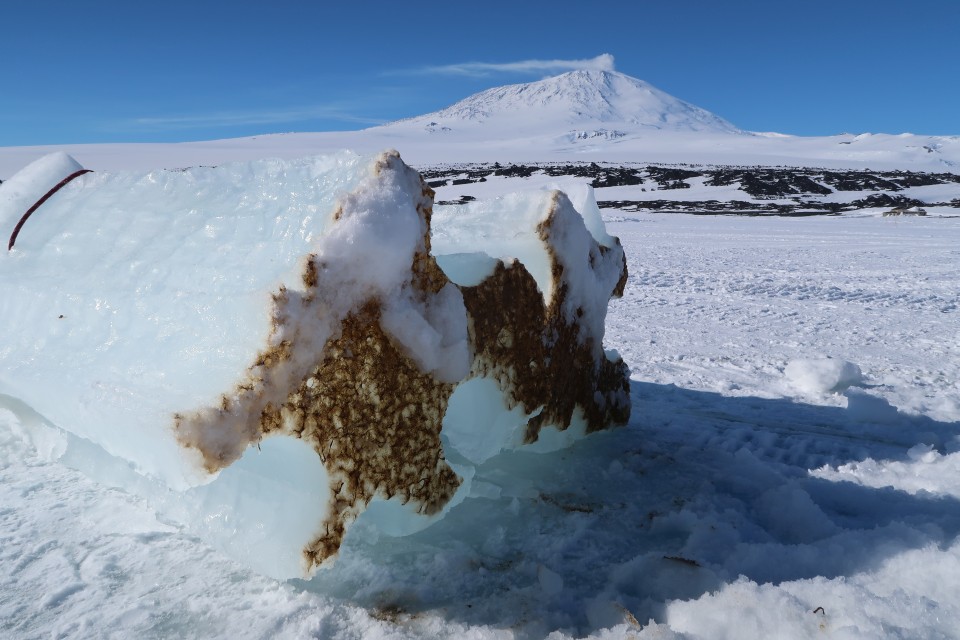
This column of sea ice shows the algae that grows on the underside. How do you think this algae survives the cold conditions of Antarctica? Image: LEARNZ.
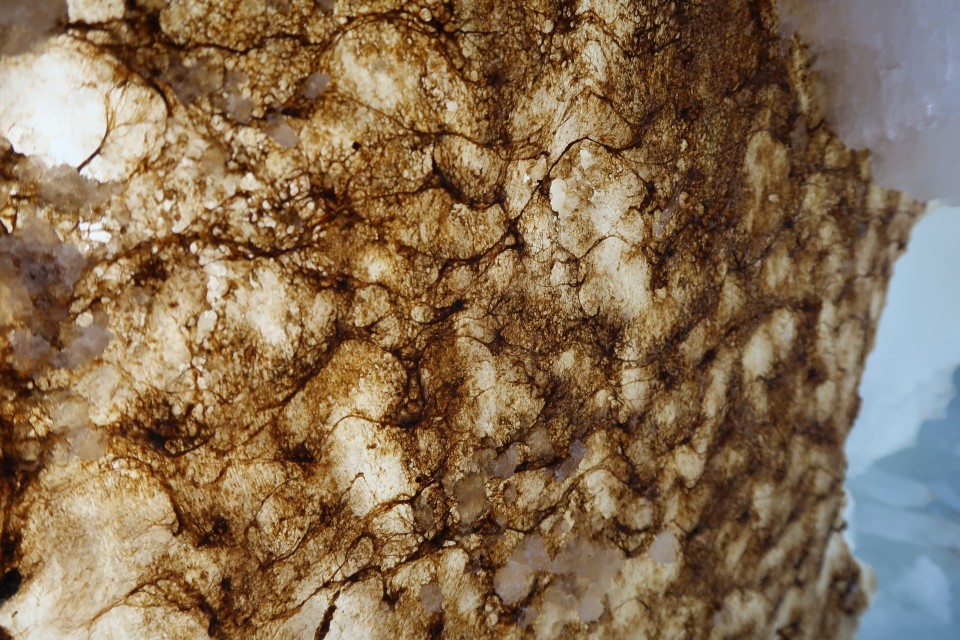
A close look at the strands of algae growing on the underside of sea ice. What animals do you think eat this algae? Image: LEARNZ.
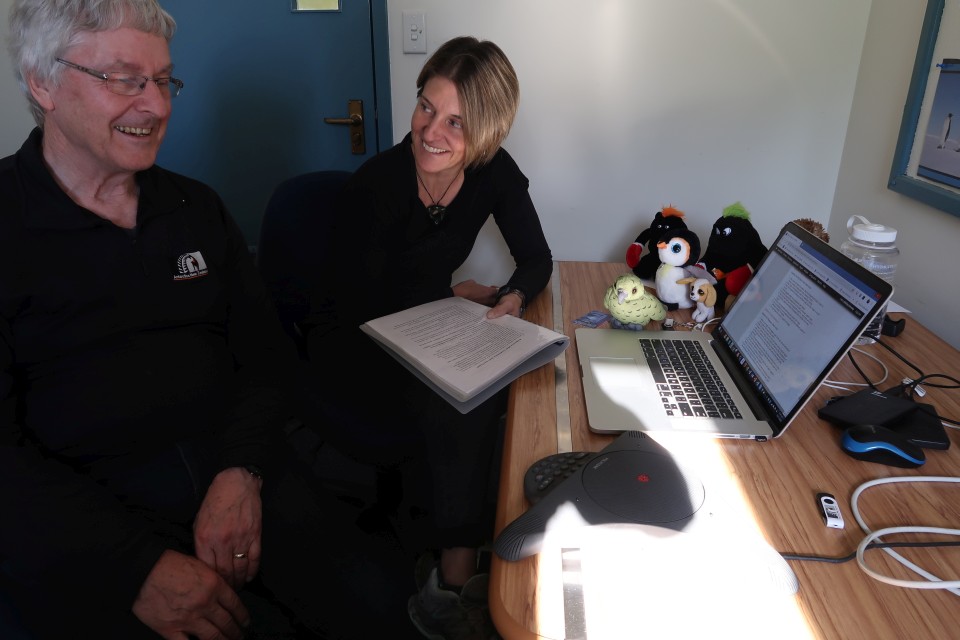
Ken answers questions from North Street School during today's web conference. Image: LEARNZ.
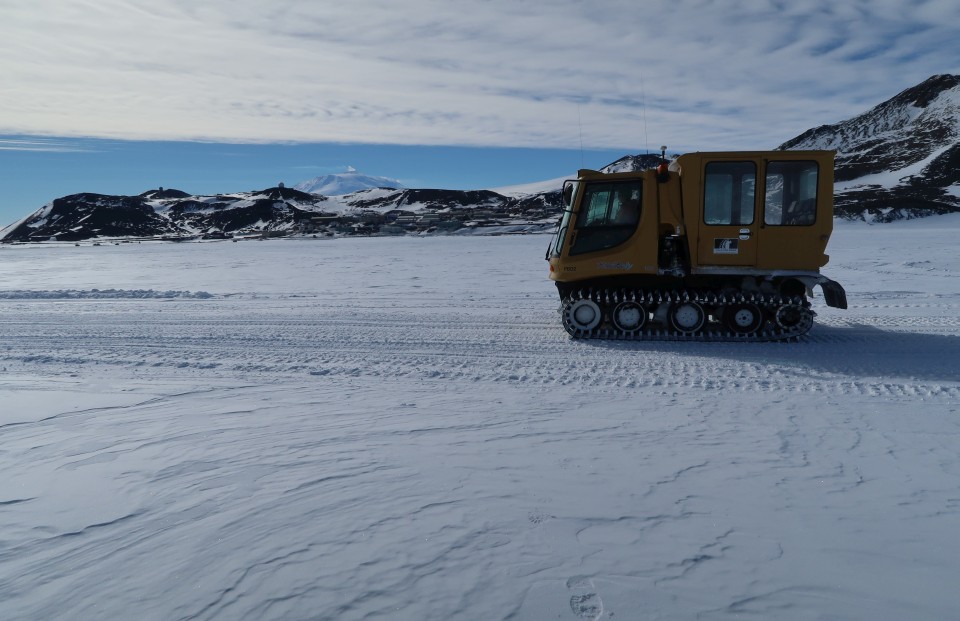
Shelley and the ambassadors head back out to Cape Evans on a Pisten Bully. Image: LEARNZ.
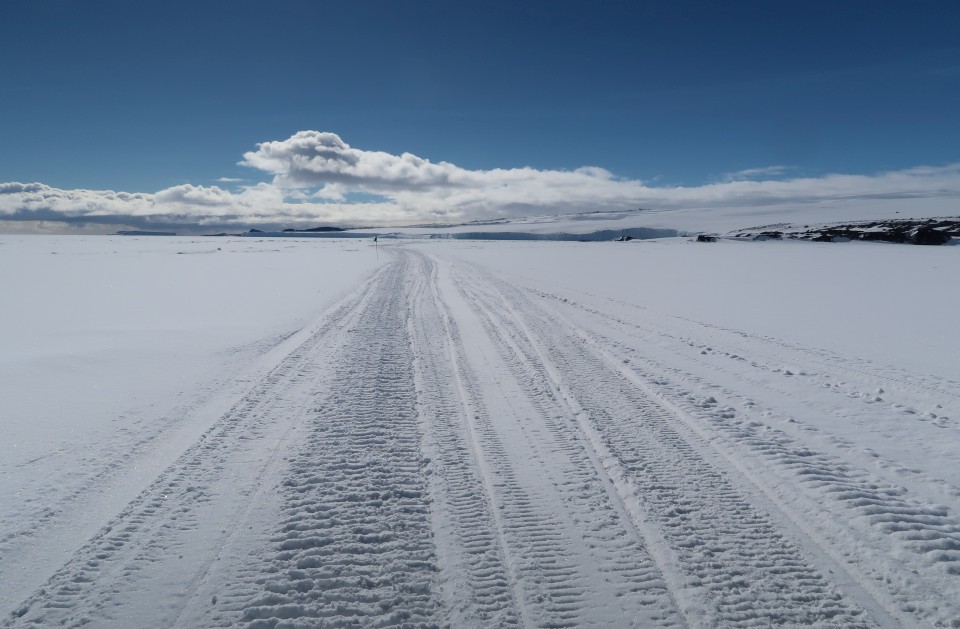
As you approached Cape Evans you could see the Barne Glacier. Image: LEARNZ.
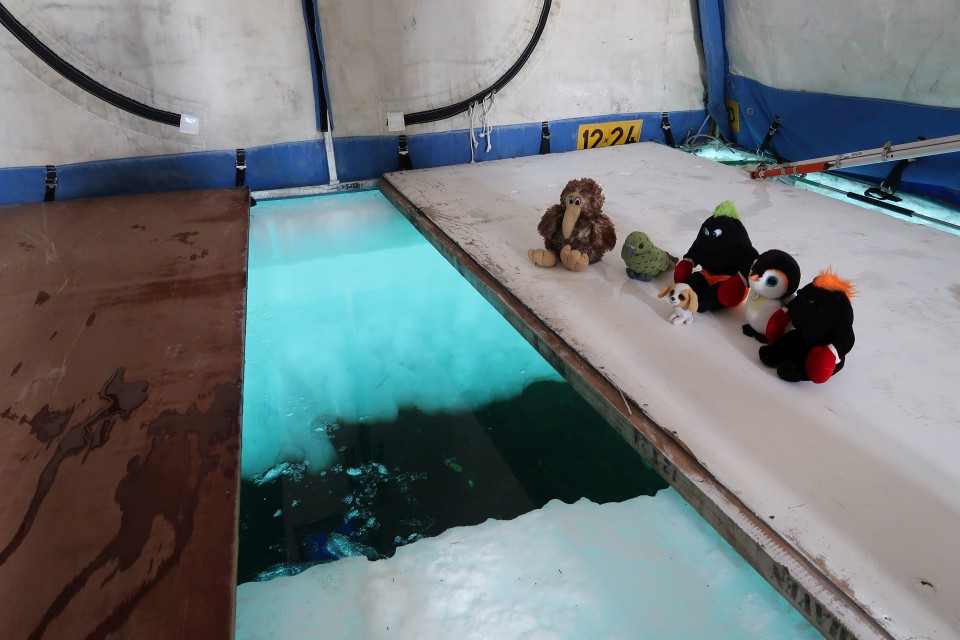
The ambassadors look through a hole that has been drilled into the sea ice. How cold do you think this water is? Image: LEARNZ.

This chunk of ice shows brown sea ice algae growing on the surface. Image: LEARNZ.
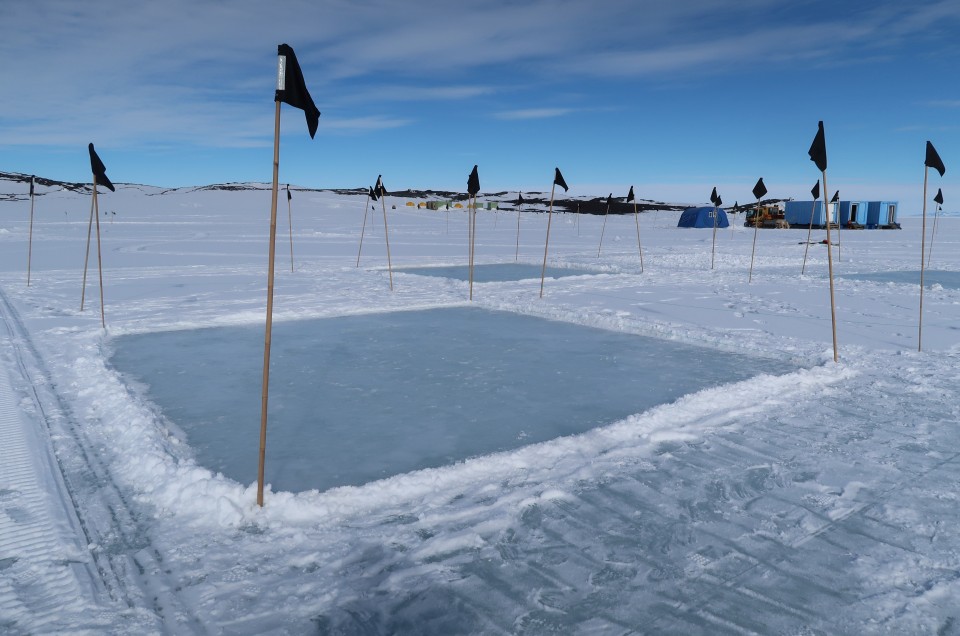
The scientists have been doing some snow gardening. These five metre plots will be used to monitor how sea ice algae responds to changes in snow depth. How do you think different snow depths could affect sea ice algae. Image: LEARNZ.
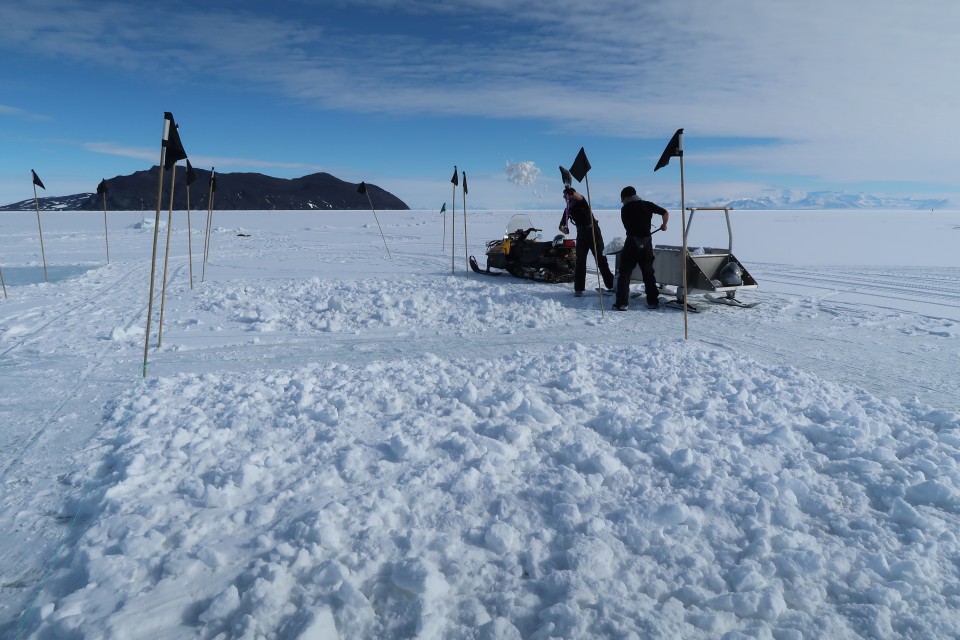
Scientists shovel snow on to areas of sea ice to model snow storms. Why do you think that it might snow more in the future in Antarctica? Image: LEARNZ.
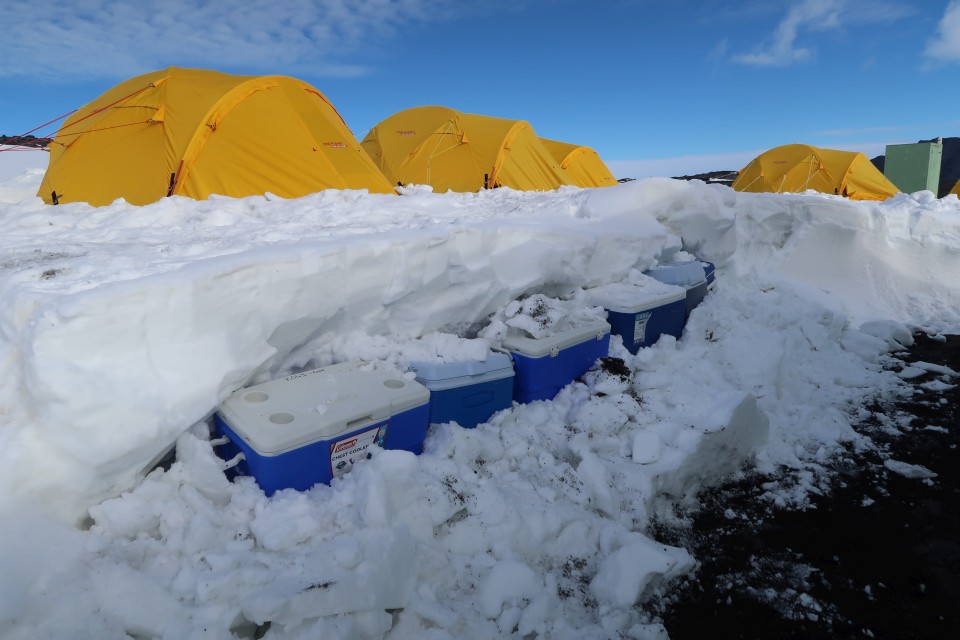
Chilly bins are kept cold in the snow. You don't need a fridge when you're camping in Antarctica! Image: LEARNZ.
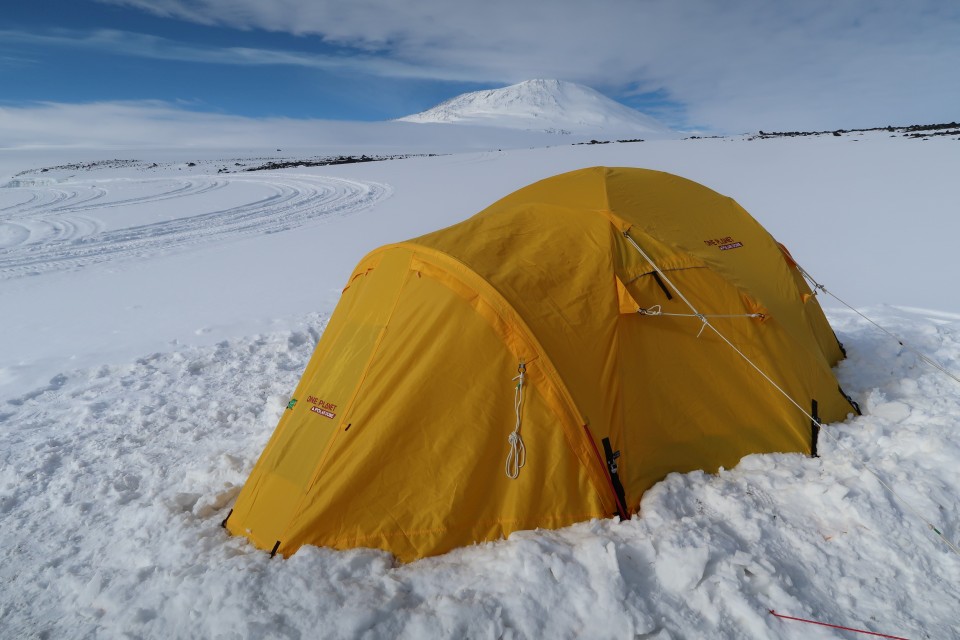
Don't let the sunshine fool you, it's 11pm and time for bed. Image: LEARNZ.
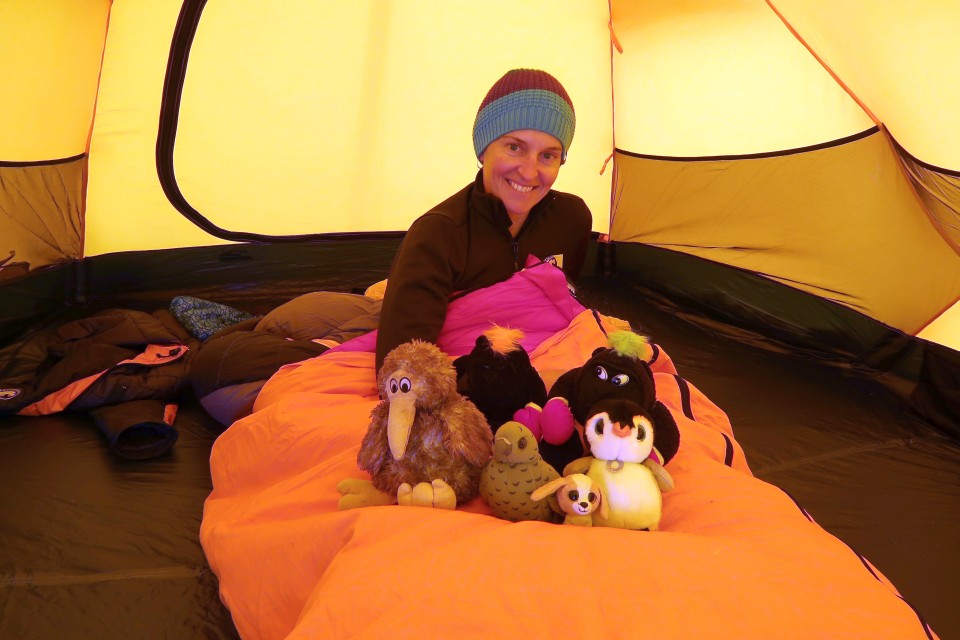
Shelley and the ambassadors settle in for the night at Cape Evans. What specialised gear do you think you would need to comfortably camp in Antarctica? Image: LEARNZ.
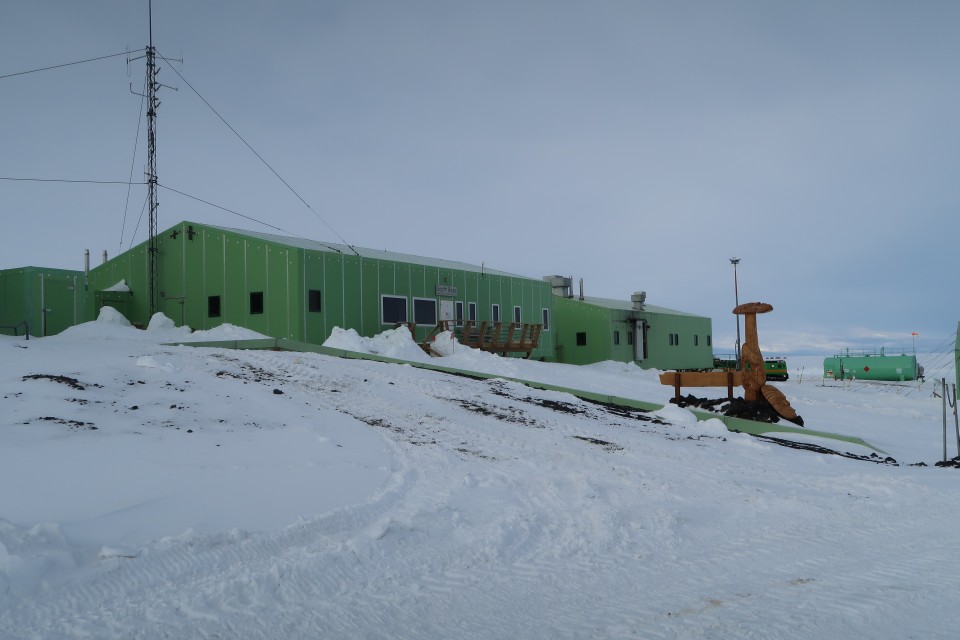
Another day in a frozen paradise at Scott Base. Image: LEARNZ.
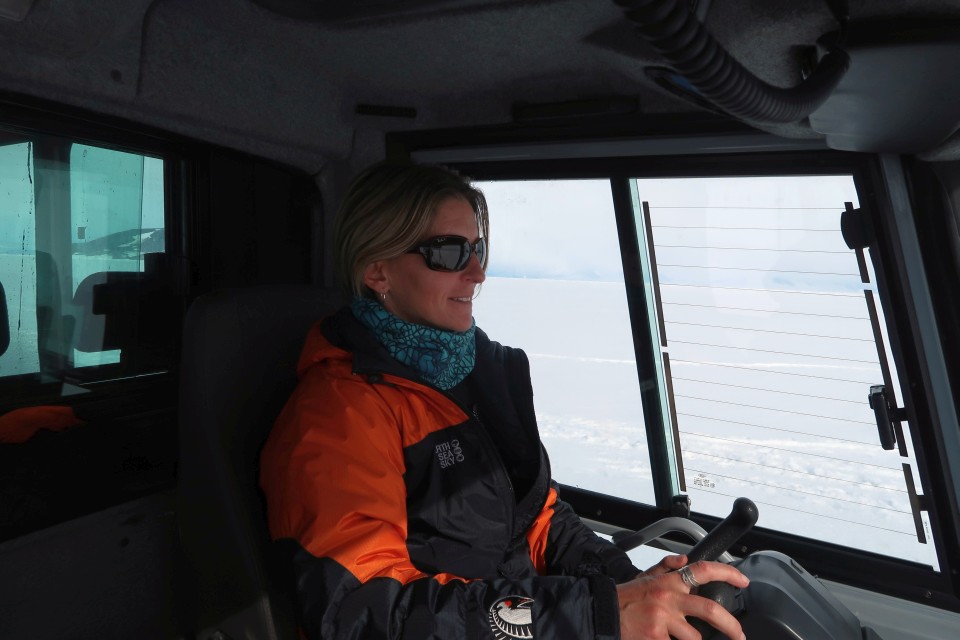
Shelley keeps her eye on the flagged route as she drives the Pisten Bully out to Cape Evans. Image: LEARNZ.
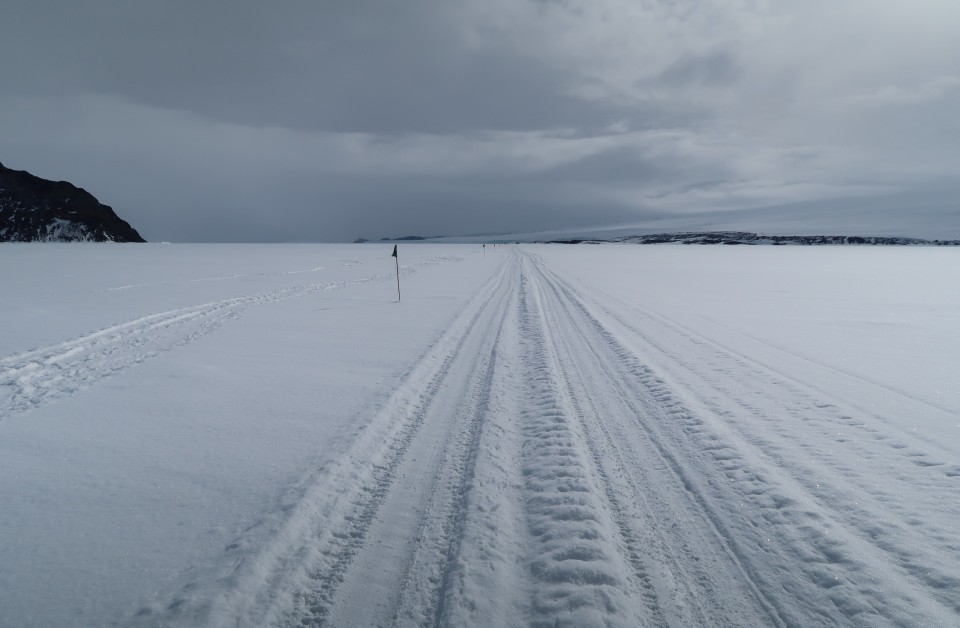
Heading north to Cape Evans across the sea ice. Image: LEARNZ.
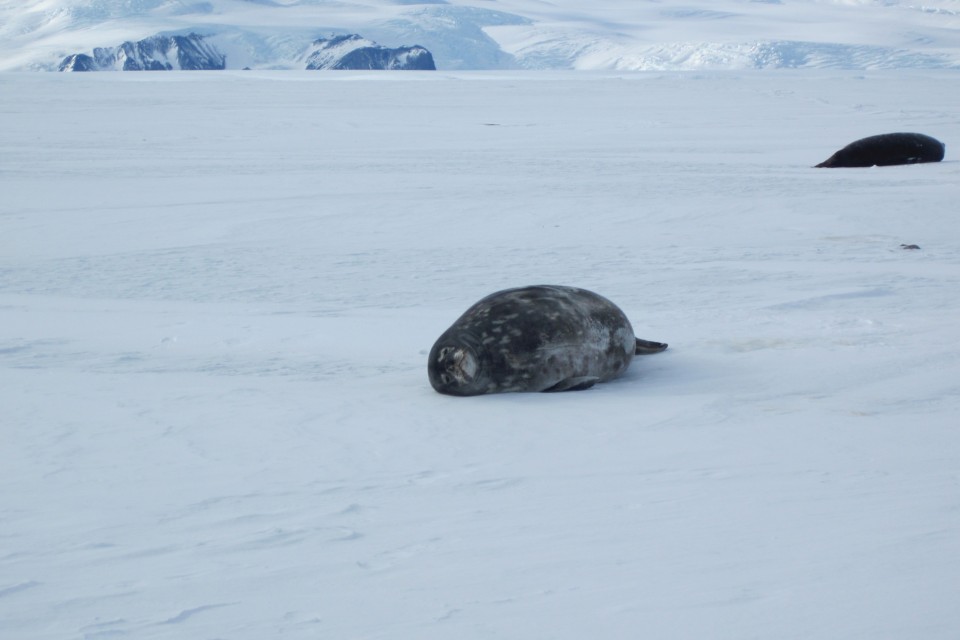
You could see Weddell seals lying on the sea ice as you drove to Cape Evans. What do you think these animals eat? Image: LEARNZ.
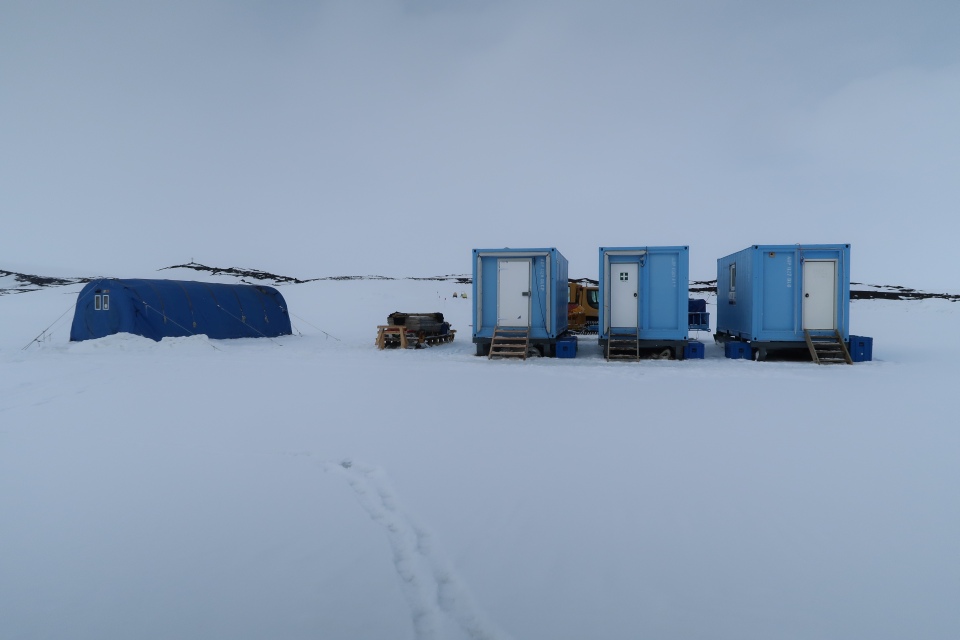
When scientists set up a field camp they bring massive amounts of equipment. Image: LEARNZ.
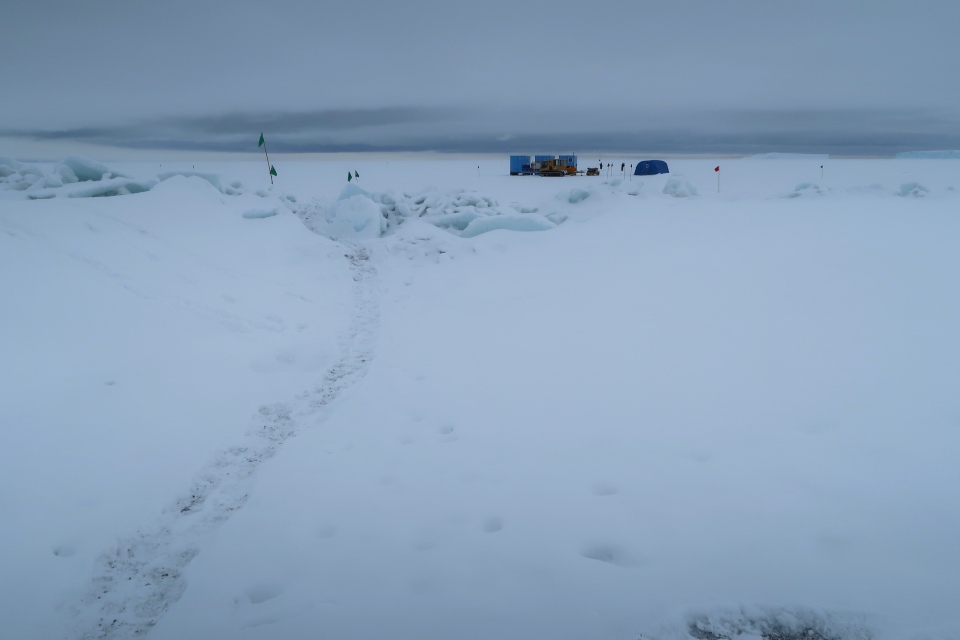
You had to be careful walking between the land and the sea ice to avoid the tide cracks. Why do these cracks form? Image: LEARNZ.

A kitchen and lounge has been set up inside these shipping containers. Why do you think shipping containers have been used? Image: LEARNZ.
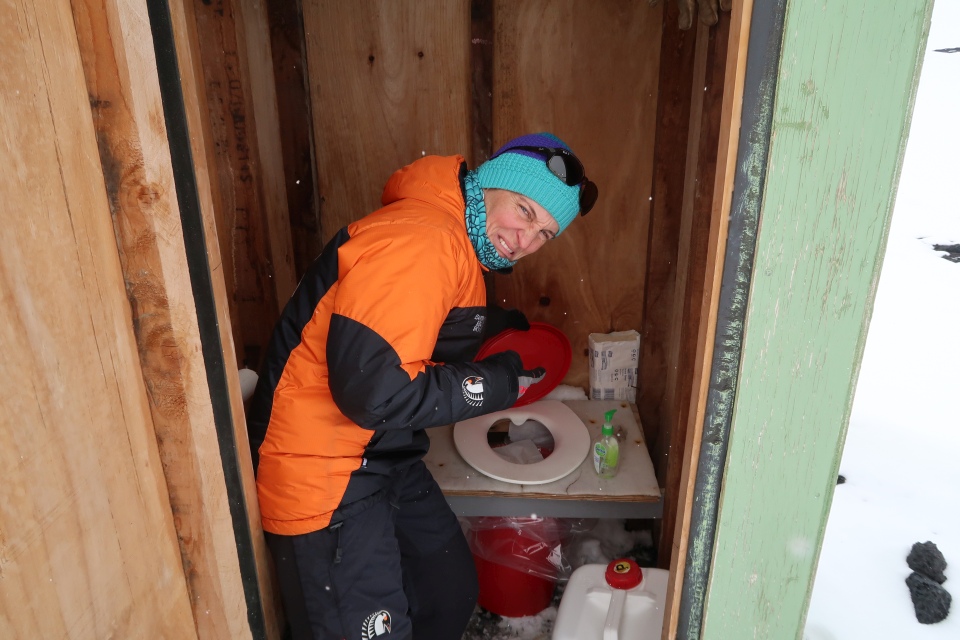
Shelley gets to see how toilet waste is separated and contained so it can be taken back to Scott Base. What happens to this waste at Scott Base? Image: LEARNZ.
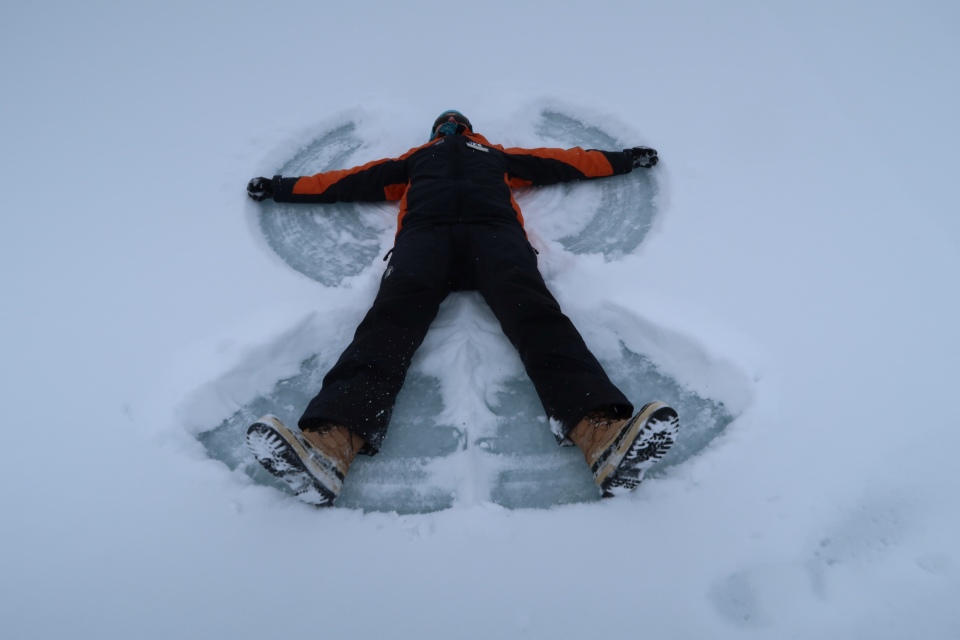
Fresh snow fell overnight at Cape Evans so Shelley couldn't resist making a snow angel. It doesn't often snow in Antarctica, why is this? Image: LEARNZ.

Before long it was time to head back to Scott Base. Tomorrow you will have time to camp here overnight. Image: LEARNZ.
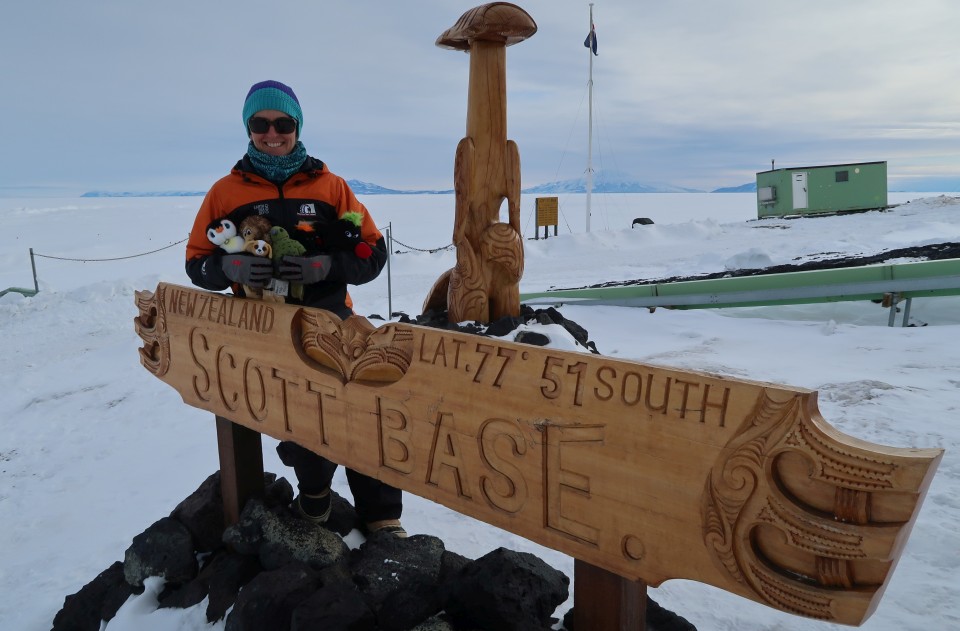
Shelley and the ambassadors celebrate being 77 degrees South in Antarctica. What is the latitude where you live? Image: LEARNZ.
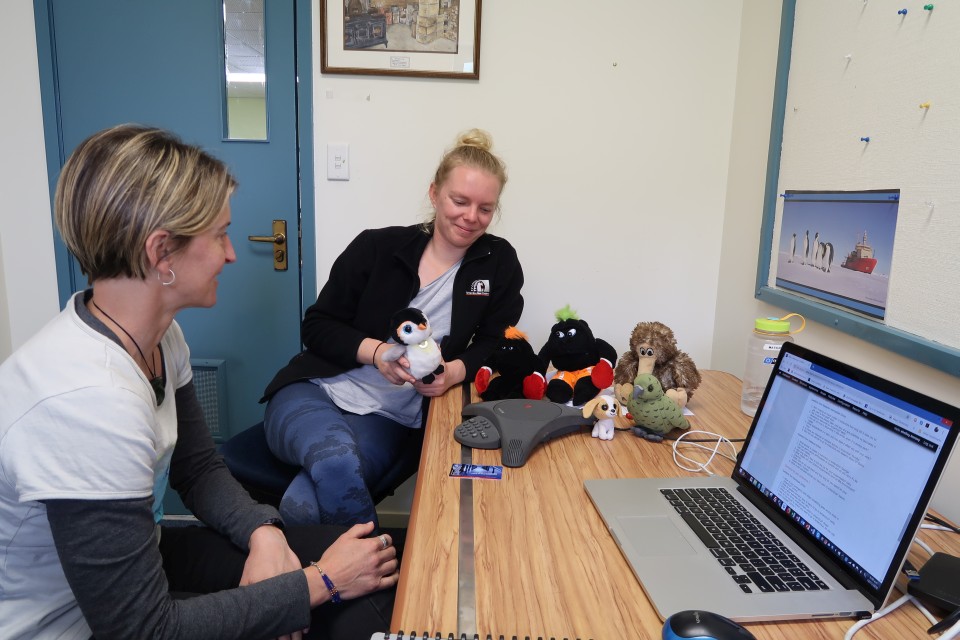
Shelley and Matilda talk to Masterton Intermediate and Waitetuna School during the first web conference. Image: LEARNZ.
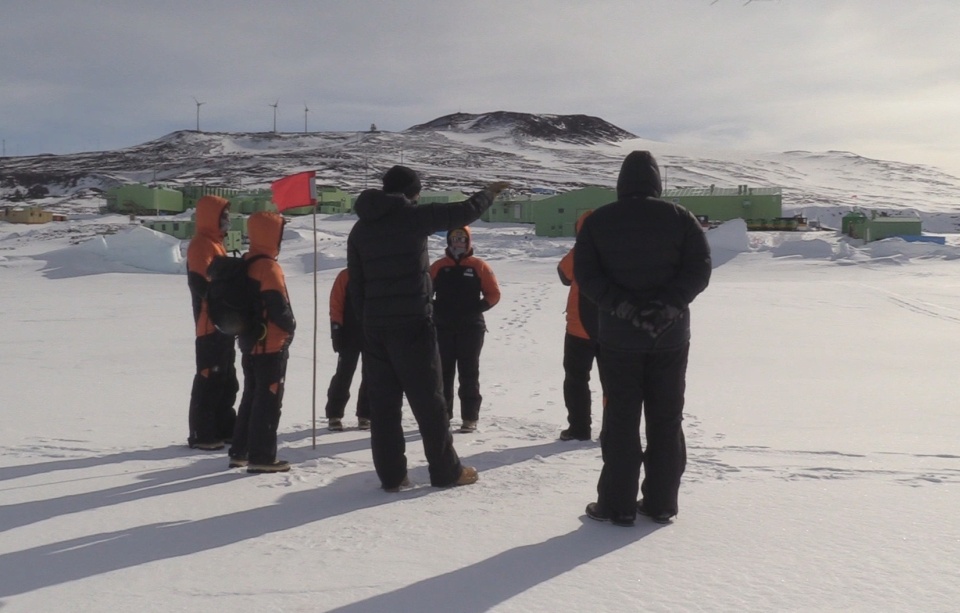
John, a field trainer for Antarctica New Zealand, takes a group out on to the sea ice for Antarctic Field Training. What do you think you would need to learn to stay safe while in Antarctica? Image: LEARNZ.
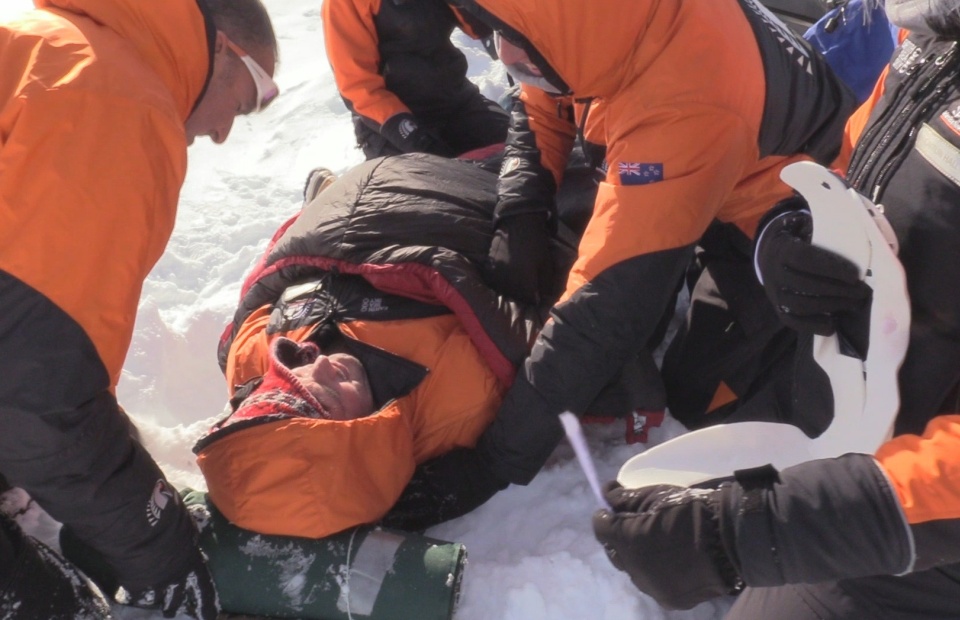
A patient receives first aid after a simulated skidoo accident during Antarctic Field Training. Image: LEARNZ.
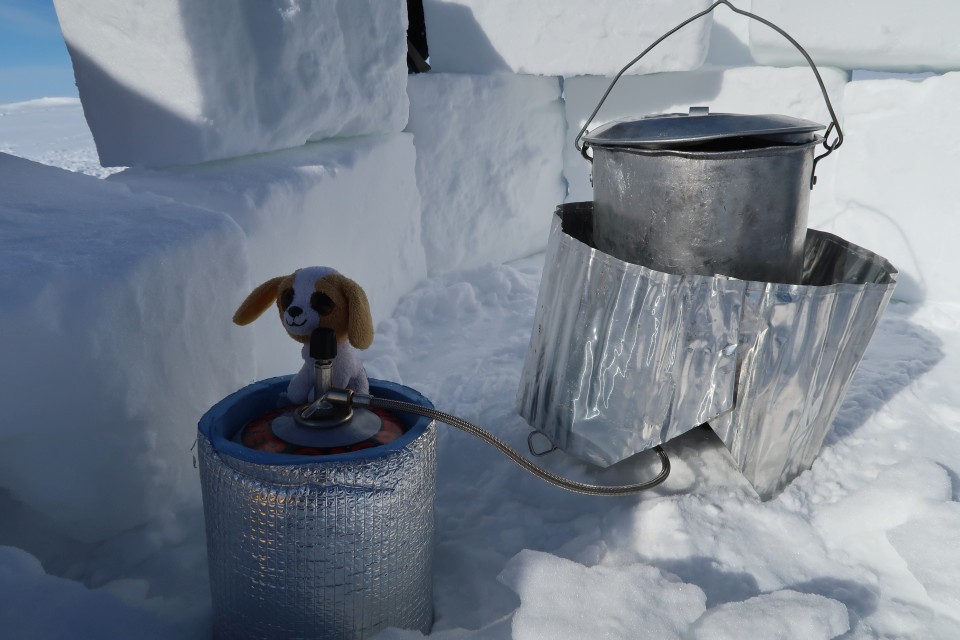
Cookie helps melt snow as part of his field training. Why do you think it is important to know how to use camping stoves in Antarctica? Image: LEARNZ.
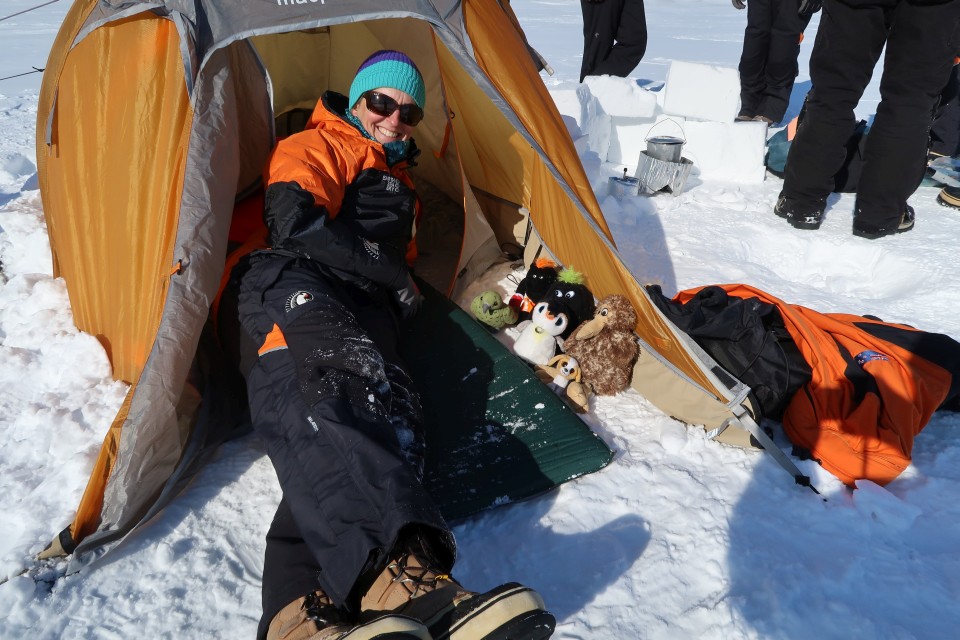
Shelley and the ambassadors pitch a tent during field training. These tents are part of the emergency survival bags that everyone must carry when travelling away from Scott Base. What else do you think is in these survival bags? Image: LEARNZ.

Antarctic Field Trainees head through the pressure ridges in the sea ice on their way back to Scott Base. What do you think creates these ridges? Image: LEARNZ.
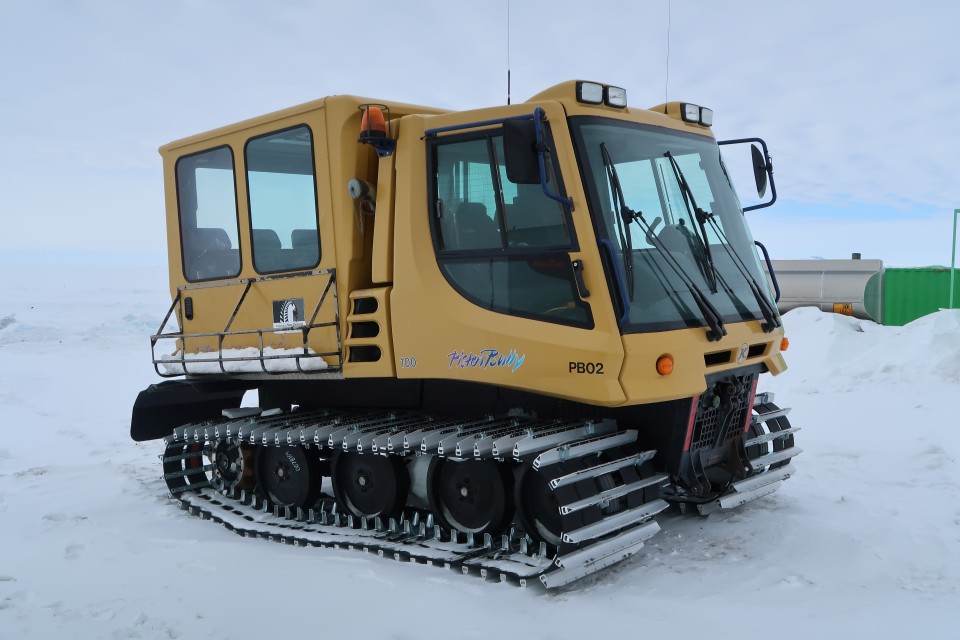
This is a Pisten Bully used to drive on ice. You will learn to drive these so you can travel out to Cape Evans. Image: LEARNZ.
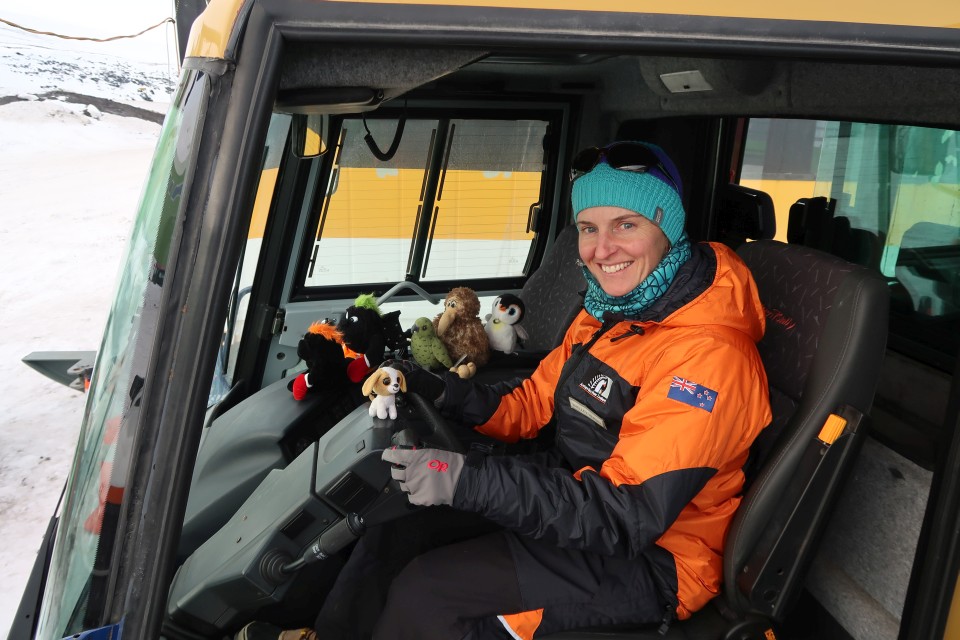
Shelley and the ambassadors learn how to drive a Pisten Bully. Image: LEARNZ.
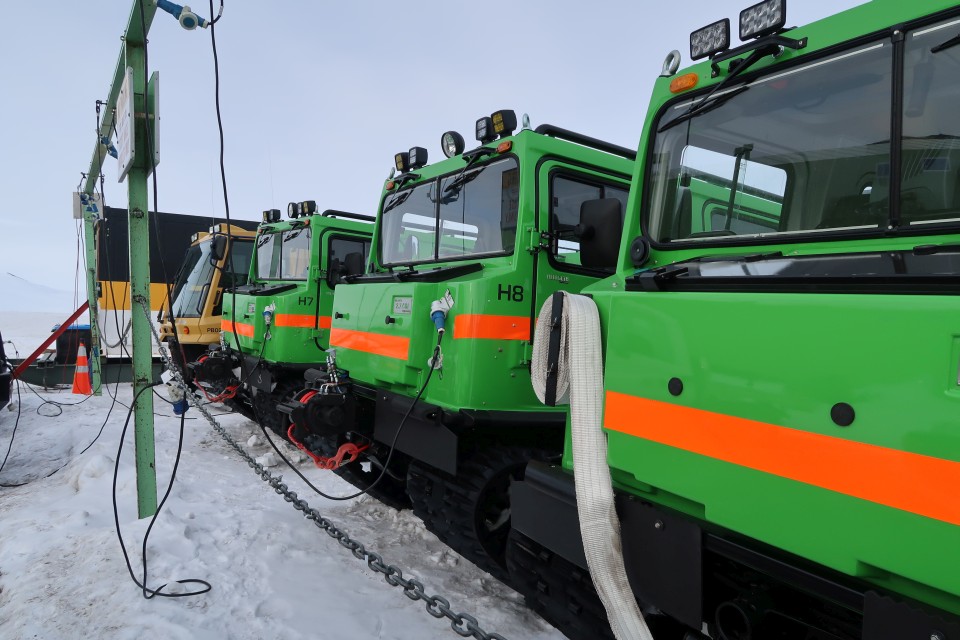
Vehicles such as these Hagglunds have to be plugged into generators to stop the engines from freezing. Image: LEARNZ.
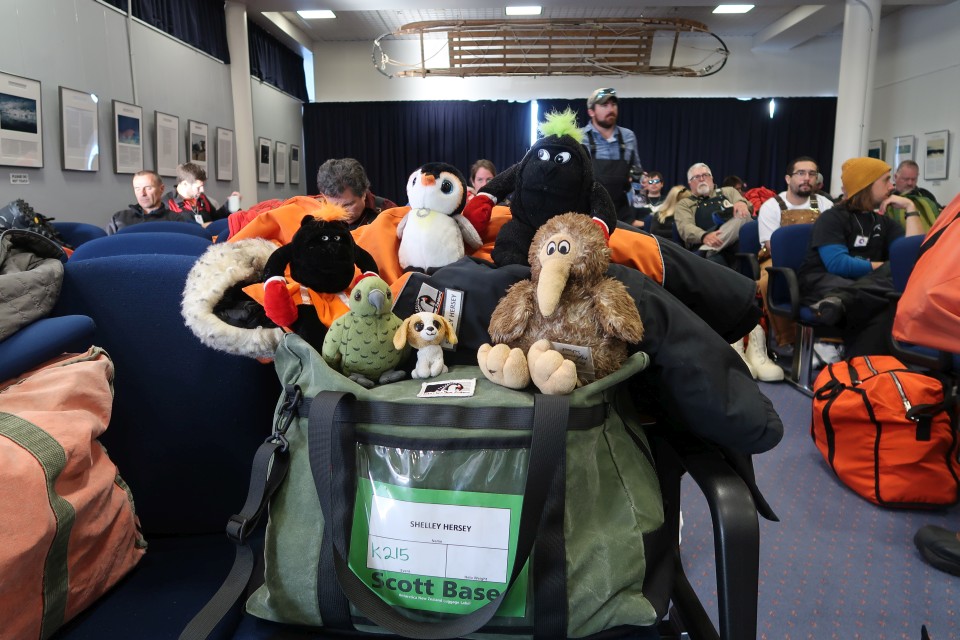
The ambassadors wait for their flight to Antarctica in the Antarctic Passenger Terminal in Christchurch. Image: LEARNZ.

Shelley is about to board the C17 Globemaster aircraft destined for Antarctica. Image: LEARNZ.
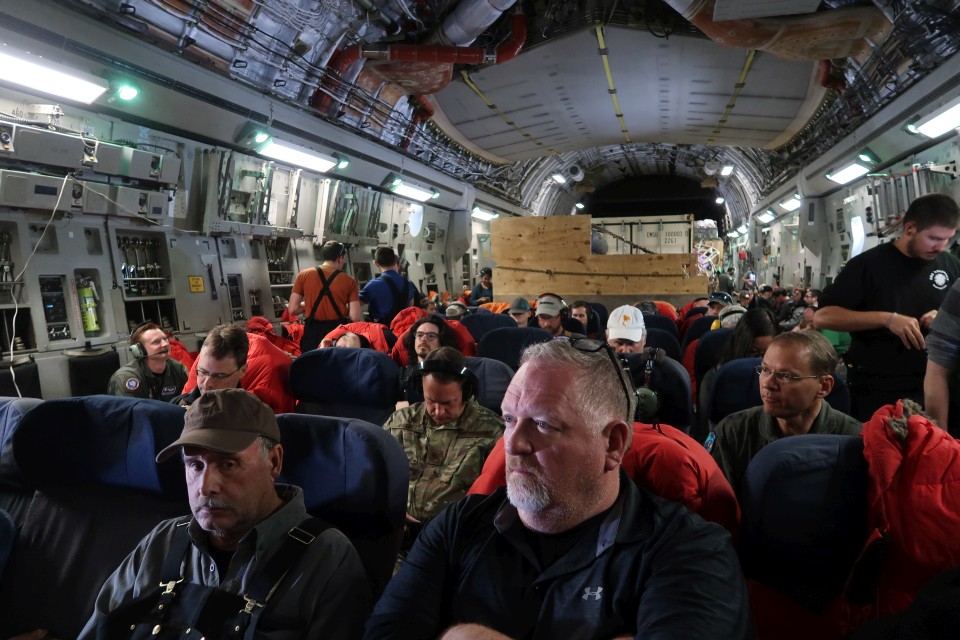
Looking from the front to the back of the C17 aircraft. These planes aren't built for comfort but can carry lots of cargo. Image: LEARNZ.

Shelley and the ambassadors settle in for the five hour flight to McMurdo Sound in Antarctica. Image: LEARNZ.

As the cloud cleared you could see huge areas of sea ice as you approached Antarctica. Image: LEARNZ.

You could see miles and miles of mountains as you crossed northern Victoria Land on the way to McMurdo Sound. Image: LEARNZ.
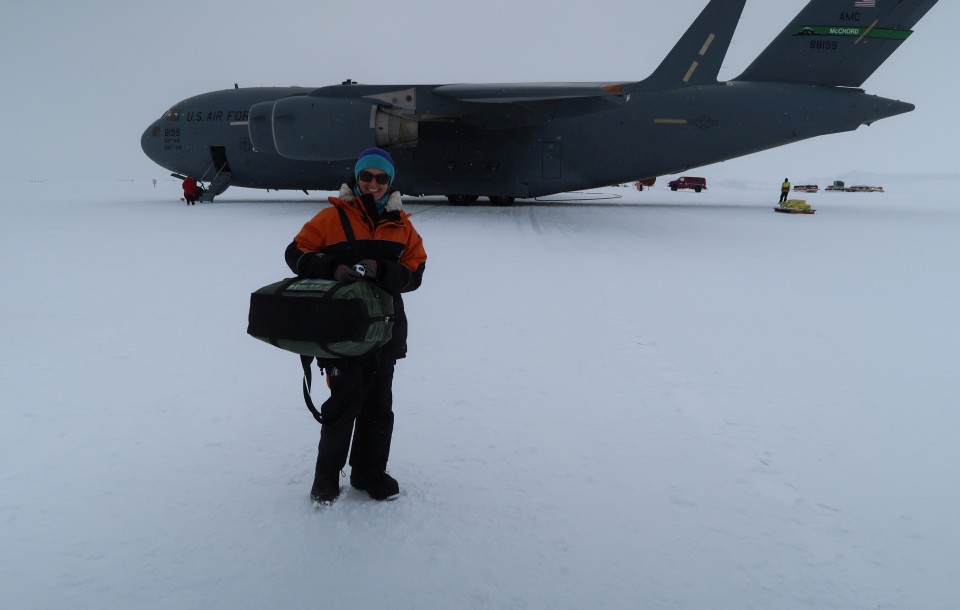
Shelley arrives in Antarctica ready to travel across the ice to Scott Base. Image: LEARNZ.
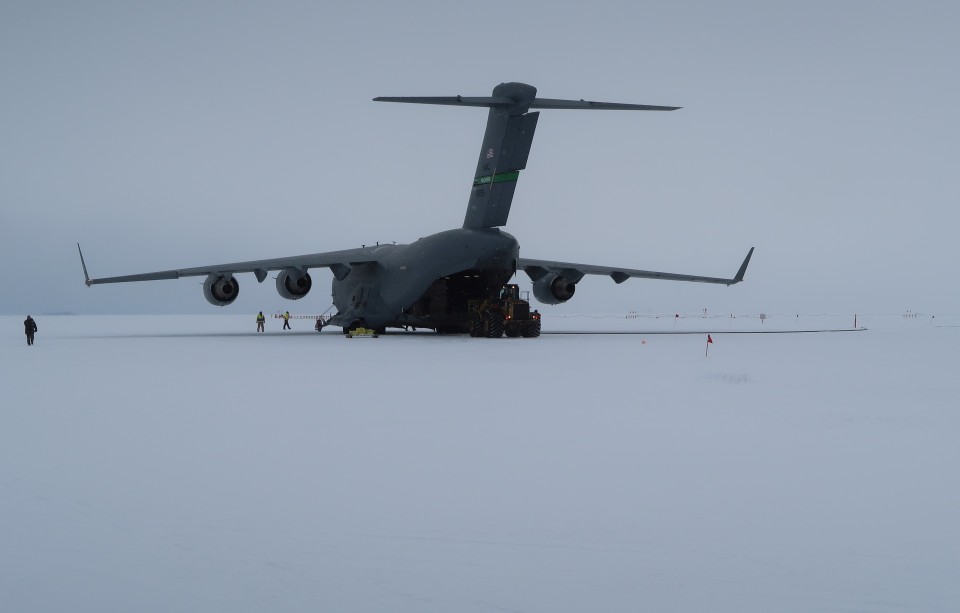
Cargo is unloaded from the C17 aircraft so it can be taken to either Scott Base or McMurdo Station. Image: LEARNZ.
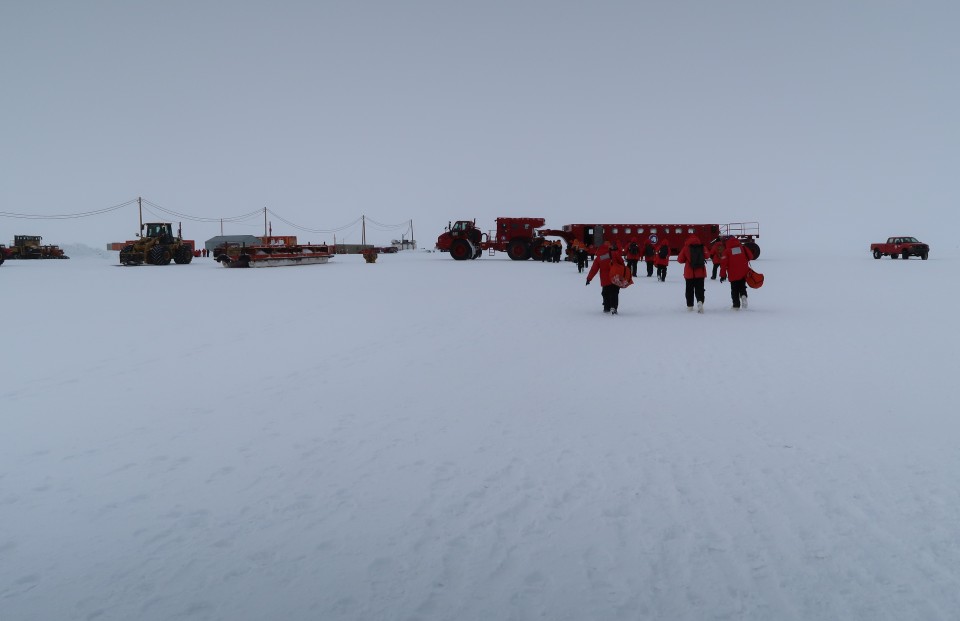
Passengers walk to a purpose-built vehicle which will drive across the ice to Scott Base. Image: LEARNZ.
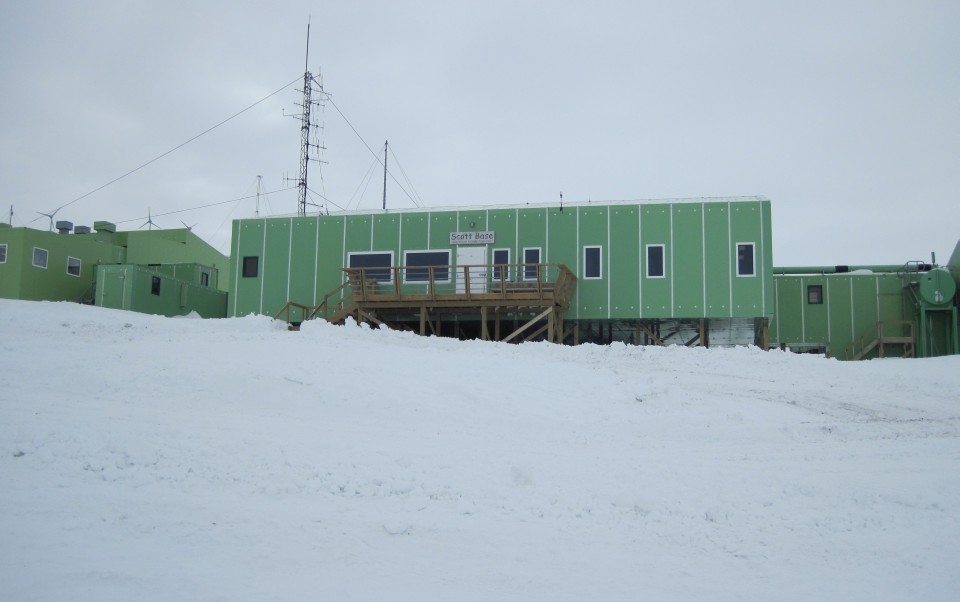
Welcome to Scott Base, New Zealand's scientific base in Antarctica. This will be your home for the week. Image: LEARNZ.